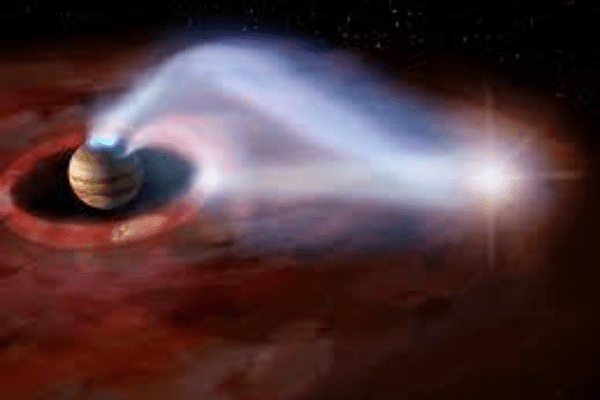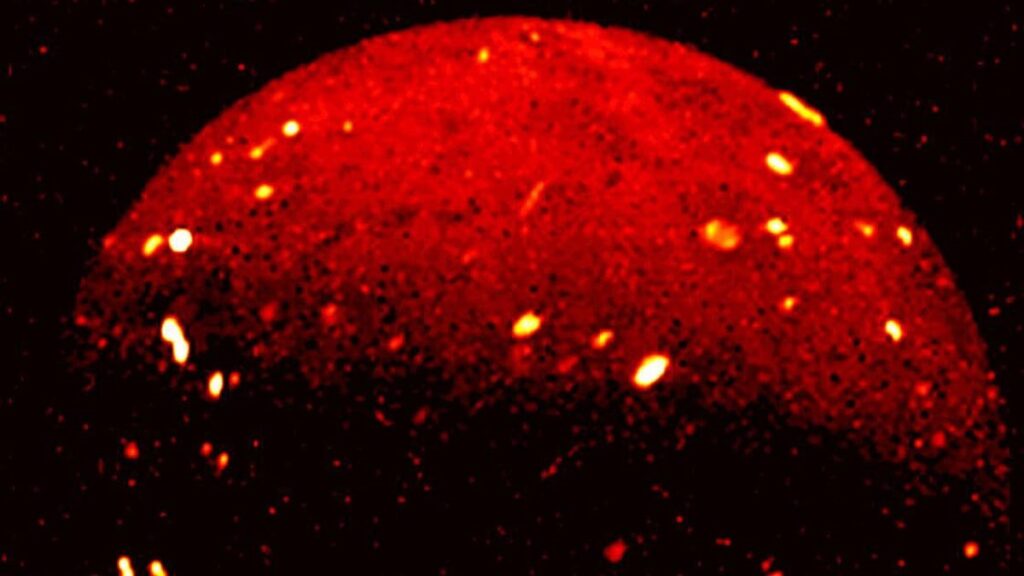NASA’s Juno mission recently captured stunning images of erupting volcanoes on Io, Jupiter’s moon, revealing its intense volcanic activity.
About Juno Mission:
- Juno is a NASA space probe orbiting the planet Jupiter.
- Built by Lockheed Martin, it is operated by NASA’s Jet Propulsion Laboratory.
- It was launched in 2011 as part of the New Frontiers program.
- NASA’s New Frontiers program is a series of space exploration missions that began in 2003 and aim to improve understanding of the solar system.
- It is the second spacecraft to orbit Jupiter, following the nuclear-powered Galileo orbiter, which orbited the planet from 1995 to 2003.
- In 2016, Juno entered a polar orbit around Jupiter to initiate a scientific investigation of the planet.
- Upon completing its mission, Juno will be intentionally deorbited into Jupiter’s atmosphere.
Objectives:
- Juno’s mission is to measure Jupiter’s composition, gravitational field, magnetic field, and polar magnetosphere.
- It also aims to uncover insights into how the planet formed, including whether it possesses a rocky core, the extent of water within its deep atmosphere, mass distribution, and the characteristics of its deep winds, which can reach speeds of up to 620 km/h (390 mph).
Features:
- Juno, powered by the largest solar panel wings (Juno solar array) deployed on a planetary probe at launch, relies on them for both stability and generating power.
- It carries scientific instruments including Magnetometers, Gravity Science, Microwave radiometer, etc.
About Jupiter’s moon Io:
- Jupiter’s moon Io is the “most volcanically active world in the solar system,” with hundreds of volcanoes, some erupting lava fountains dozens of miles high.
- Io is caught in a gravitational tug-of-war between Jupiter’s immense gravity and the smaller yet precisely timed pulls from two neighboring moons, Europa and Ganymede, which orbit farther from Jupiter.
- Slightly larger than Earth’s moon, Io is the fourth-largest moon in the Solar System.
- It is also the third largest of Jupiter’s moons.
- It has the highest density and strongest surface gravity among moons and contains the least amount of water by atomic ratio of any known astronomical object in the Solar System.
- Discovered in 1610 by Galileo Galilei, Io was named after the mythological character Io, a priestess of Hera who became one of Zeus’s lovers.
Ref:Source
| UPSC IAS Preparation Resources | |
| Current Affairs Analysis | Topperspedia |
| GS Shots | Simply Explained |
| Daily Flash Cards | Daily Quiz |



